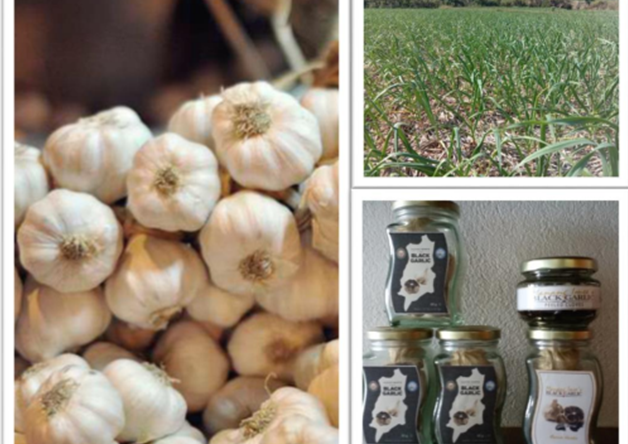News and Articles
Mission possible as DOST positions R&D center in Region I for more innovation
Photo courtesy: Dionisio S. Bucao Phd, Supervising Education Program Specialist
Garlic - bawang in Tagalog, ahos in Bisaya - is an Asian staple as food ingredient. Every Filipino kitchen has garlic. One cannot cook adobo (a favorite Filipino dish with pork or chicken) nor eat fried rice without garlic.
Despite our love for garlic the Philippines surprisingly produces garlic in small volume, estimated at 7,751 mt (2017), with Ilocos Norte contributing 61% of the total production followed by Occidental Mindoro (19%), and then Ilocos Sur (4%), (PSA, 2018).
In 2017, the country ranked 46th among the 101 garlic-growing nations in the world in terms of volume production, based on the record from the Food and Agriculture Organization’s Statistical Databases.
The declining production is attributed mainly to the low yield of existing varieties, low soil fertility particularly organic matter content of current production areas, pest infestation from production to post-harvest losses. As a result, farmers are shifting to other high-value commercial crops, such as corn and tobacco, leaving garlic production behind.
To solve this growing problem, the Department of Science and Technology (DOST), through the Niche Centers in the Regions (NICER) Program, approved a PHP35.5-million fund for the establishment of the Garlic and Other Agri-Food Condiments Research and Development (R&D) Center last 30 April 2021. This program under the umbrella Science for Change (S4CP) Program is expected to help increase the production of garlic, thus improving its market competitiveness.
Dr. Dionisio S. Bucao, program leader, said the Center has five component projects. These include the following: collection, characterization, conservation, and improvement of garlic and chili genetic resources; improvement of garlic and other agri-food condiments productivity through integrated crop management system; development and evaluation of a village-level low-cost storage structure for garlic; enhancement of the usability and profitability of garlic through black garlic processing; and, identification of the key strategies in improving the competitiveness of the local garlic through value chain analysis of garlic in the country.
Further, this will help in keeping agriculture safely running as an essential source of food (supply), thereby helping in the country’s efforts to heighten food security.
Incidentally, the Niche Centers in the Regions or NICER is just one of the many programs that will be showcased during the upcoming celebration of the 2021 National Science and Technology Week from 22-28 November 2021. Other S4CP programs that will share the limelight are the Collaborative Research and Development to Leverage Philippine Economy (CRADLE), Business Innovation through S&T (BIST) for Industry Program, and the R&D Leadership Program (RDLead). Furthermore, other innovations from DOST agencies and regional offices will be featured in the areas of smart farming for agriculture, health and nutrition, emerging technologies, satellite technology, disaster preparedness tools, application of nuclear technology in medicine, enterprise development, industry automation and artificial intelligence, robotics, scholarships, and community empowerment program.
For more information on the different activities of the 2021 NSTW such as webinars, product demonstrations, forums, etc. just visit the website www.nstw.dost.gov.ph or check out the Facebook page of NSTW.
#ScienceForThePeople
#dostPH
#DOSTTugonSaHamon
#2021NSTW
FEATURED NEWS
17 NOV 2022
Sec. Solidum banners local technologies and innovations in the 2022 NSTW hybrid celebration21 OCT 2022
DOST showcases fishery, agro-forestry, ecotourism technologies during Caraga science fair
CONTACT US
Science and Technology Information Institute (STII)
Technology Application and Promotion Institute (TAPI)
(02) 837-2071 loc.2162
nstw.secretariat@gmail.com
(02) 837-2071 local 2148
nstwpromotions@gmail.com
